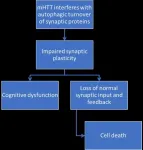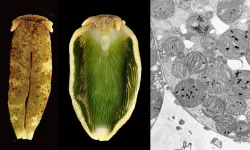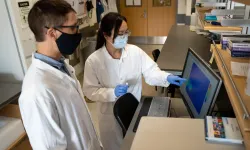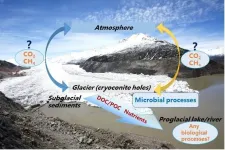(Press-News.org) Amsterdam, July 15, 2021 - Huntington's Disease (HD) is a progressive neurodegenerative condition characterized by motor, cognitive, and psychiatric symptoms, and motor symptoms are often preceded by cognitive changes. Recent evidence indicates that autophagy plays a central role in synaptic maintenance, and the disruption in autophagy may be at the root of these early cognitive changes. Understanding this mechanism better may help researchers develop treatments for patients with HD early in their disease progression, report scientists in a review article published in the Journal of Huntington's Disease.
In this review, experts describe how autophagy, the cellular process responsible for clearing old or damaged parts of the cell, plays a critical role supporting synaptic maintenance in the healthy brain, and how autophagy dysfunction in HD may thereby lead to impaired synaptic maintenance and thus early manifestations of disease. The line of research discussed in this review represents a previously unexplored avenue for identifying potential disease-modifying therapies for HD.
"Like many neurodegenerative conditions affecting primarily cognition, such as Alzheimer's disease, preclinical and clinical data indicate that synapses, the part of brain cells responsible for communication between cells, are affected early in HD," explained Hilary Grosso Jasutkar, MD, PhD, Department of Neurology, Columbia University, and Ai Yamamoto, PhD, Departments of Neurology and Pathology and Cell Biology, Columbia University, New York, NY, USA. "We have long thought that autophagy played a role in the pathophysiology of HD, but what this role is has been unclear until recently. Recent evidence indicates that autophagy may be important in maintaining the synapse. This line of research has the potential to lead to identification of a drug target to treat HD early in the disease process."
The authors first explore how cognitive dysfunction is an early manifestation of HD, and that similarly to other neurodegenerative diseases that primarily affect cognition, such as Alzheimer's disease, dementia with Lewy bodies, and frontotemporal dementia, early deficits in synaptic function may underlie these cognitive symptoms. Next, they review the growing evidence that the lysosome-mediated degradation pathway autophagy plays a central role in synaptic maintenance, and how the disruption in autophagy may contribute to early cognitive changes in HD.
The authors conclude that there are pathologic and imaging data in individuals with mutations in the Huntingtin protein (mHtt), as well as evidence from animal models with HD, that suggest that synapse dysfunction may occur early in HD, prior to cell death.
"Autophagy plays a specialized role in the maintenance and function of the synapse, and mHtt may disrupt this function, leading to the early synaptic changes seen in HD patients and model systems," explained Dr. Grosso Jasutkar. "These synaptic changes may then manifest as impairments in synaptic plasticity and thus cognitive changes early in the disease course. Given that neurons rely on synaptic input and feedback for cell health, it is possible that this disruption in synaptic signaling in and of itself contributes to cell death in HD."
"There is much work yet to be done in this field," added Dr. Yamamoto. "Although various groups have demonstrated individual components of this pathway, a direct causal relationship of mutant Htt leading to synaptic dysfunction and, in turn, cognitive impairments, has yet to be demonstrated."
"If the model described here is borne out, therapeutics aimed at enhancing the efficiency of synaptic autophagy early in the course of HD could be protective against early cognitive changes and potentially degeneration itself," concluded the authors.
HD is a fatal genetic neurodegenerative disease that causes the progressive breakdown of nerve cells in the brain. An estimated 250,000 people in the United States are either diagnosed with, or at risk for, the disease. Symptoms include personality changes, mood swings and depression, forgetfulness and impaired judgment, unsteady gait, and involuntary movements (chorea). Every child of an HD parent has a 50% chance of inheriting the gene. Patients typically survive 10-20 years after diagnosis.
INFORMATION:
We sleep on average one third of our time. But what does the brain do during these long hours? Using an artificial intelligence approach capable of decoding brain activity during sleep, scientists at the University of Geneva (UNIGE), Switzerland, were able to glimpse what we think about when we are asleep. By combining functional magnetic resonance imaging (fMRI) and electroencephalography (EEG), the Geneva team provides unprecedented evidence that the work of sorting out the thousands of pieces of information processed during the day takes place during ...
The COVID-19 pandemic halted the in-person wintertime survey of wolves and moose on the island for the first time in 63 years. Consequently, there are no estimates of wolf or moose abundance for 2021, and the next estimates are scheduled in February 2022. But though the Isle Royale Winter Study didn't happen quite as planned, researchers were still able to visit the remote national park in the spring.
Now, fieldwork has resumed and Michigan Technological University researchers have already uncovered new information about these two iconic wildlife populations. In particular, wolves produced at least two litters of pups, and moose appear poised for decline.
In the Isle Royale Winter Study, Michigan ...
Plants, algae and some bacteria are able to perform photosynthesis, which is the process of transforming sunlight energy into sugar. Animals are generally unable to use this process to acquire energy, but there are a few known exceptions to this. Some sea slugs take up chloroplasts from the algae that they consume into their cells. These chloroplasts retain their ability to perform photosynthetic activity within the animal cells for several months, and thus provide them with photosynthesis-derived nutrition. This process is called "kleptoplasty", and it has attracted much attention due to its amazing uniqueness in making animals photosynthetic for over 50 years.
A pressing question is how these sequestered chloroplasts retains their photosynthetic capability without algal nuclei. ...
Since the Paris Climate Agreement that took effect in 2016, 121 countries have pledged to become carbon neutral by 2050 as the world tries to reduce its fuel consumption. The Korean government also unveiled its 2050 Carbon Neutral Strategy on December 7, 2020 and declared Carbon Zero, making transition to new and renewable energy a topic of conversation. Recently, a joint research team from POSTECH and Korea University has developed a radiative cooling material that can reduce energy consumption by selectively reflecting or transmitting sunlight.
A research team led by Professor Junsuk Rho, Ph.D. candidate Minkyung Kim, and Dr. Dasol Lee of POSTECH's departments of mechanical engineering and chemical engineering, and a team led by Professor Heon Lee and Soomin of the Department of Materials ...
Combined perceptions of the risk and availability of cannabis influence the risk of cannabis use more than perceived risk and perceived availability alone, according to a new study at Columbia University Mailman School of Public Health. Researchers observed that those who perceived cannabis as low-risk and available were more likely to report using the drug in the past year and almost daily compared to those individuals who perceived cannabis as high-risk and unavailable. This is the first study to consider the joint effects of perceived risk and perceived availability. The results are published in the journal Drug and Alcohol Dependence.
"Our study described the evolution of joint perceptions of cannabis risk and availability from 2002-2018 and estimated the relationship between combined ...
Adolescent girls and young women can and will use HIV prevention products with consistency, according to interim results of a study of two different methods: daily use of the antiretroviral (ARV) tablet Truvada® as oral pre-exposure prophylaxis (PrEP) and the monthly END ...
Shining a beam of light into potentially contaminated water samples may hold the key to real-time detection of hydrocarbons and pesticides in water.
UBC Okanagan researchers are testing the use of fluorescence to monitor water quality. The results, they say, show great promise.
When a beam of light is shone into the water, it excites the electrons in molecules of certain compounds and causes them to emit light. The characteristics of the emitted light are like a fingerprint and can be used to identify certain contaminants, explains Nicolas Peleato, an assistant professor at UBCO's School of Engineering.
"The challenge with using this fluorescence approach is that ...
Repairing complex electrical appliances is time consuming and rarely cost-effective. The working group led by Prof. Dr. Karl Mandel, Professorship of Inorganic Chemistry at Friedrich-Alexander-Universität Erlangen-Nürnberg (FAU), has now developed a smart microparticle that enables defective components in these appliances to be identified more quickly and easily by using light signals. In the long-term, this could make repairs easier and extend the operating life of devices. The results have been published in the journal Advanced Functional Materials.
To identify defective components in a device, particles known as supraparticles are applied to the individual parts. These particles measure between one and ten micrometres and under black light they provide information ...
Fukuoka, Japan--At this very moment, the billions of neurons in your brain are using their trillions of connections to enable you to read and comprehend this sentence.
Now, by studying the neurons involved in the sense of smell, researchers from Kyushu University's Faculty of Medical Sciences report a new mechanism behind the biomolecular bonsai that selectively strengthens these connections.
How neuronal circuits remodel themselves over time, especially during early development, is an open question in neurobiology. At the start of neuronal development, neurons form excessive amounts of connections ...
The cryosphere, a term used to describe the areas of the Earth's surface where water exists in solid form, plays an important role in regulating the Earth's climate. Due to cryospheric retreat; for example, the melting Greenland ice sheet in the Arctic, greenhouse gases that were formerly in "frozen storage" are now being released. High Mountain Asia, also known as the Tibetan Plateau, hosts the largest volume of glaciers outside the polar regions. However, Tibetan glaciers are currently excluded from global greenhouse gas budgets.
According to Shichang Kang, leader of a group of researchers who recently became the first team to measure the flux variations of greenhouse gases (CO2 and CH4) in typical glacial basins in High Mountain Asia, it's important that Tibetan glaciers are not ...






